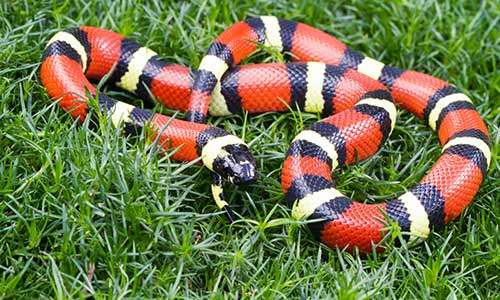
Description:
Scientific name: Lampropeltis triangulum campbelli
Life span: 12-22 years
A subspecies of the non-venomous colubrid snake Lampropeltis triangulum campbelli, also called the Pueblan milk snake or Campbell’s milk snake, lays eggs. Red, black, and white bands make up the tricolor pattern of the Pueblan milk snake. Similar colour patterns between the coral snake and Pueblan milk snake, called Batesian mimicry, serve to protect the snake from potential predators. They can be distinguished from other subspecies by their wide white bars and frequent black tipping over the red bands.

Native Region/Habitat
Mexico’s southern Puebla, northern Oaxaca, and eastern Morelos are where you can find the Pueblan milk snake.
Behavior:
Crepuscular in nature, Pueblan milk snakes are most active around dawn and twilight. When humans disturb them, they often get anxious and flittery. Unless severely provoked, they rarely bite.
Care As a pet/In captivity:
If housed in a temperature range of 80 to 85 degrees Fahrenheit with a 5 to 10 degree decrease during the night, pueblan milk snakes adapt well to life in captivity. The animal’s ability to respond to food and maintain proper digestion depends on temperature regulation. Fresh water should always be available, and cages should not be able to escape. Pueblans prefer to be in small spaces, hence a conceal box is required. Pueblan milk snakes are the most popular subspecies kept in captivity because they are easily bred and inexpensive. When first handled, they can be flighty and frequently urinate, although they almost never bite. The more you handle them, the more tame they become.
Table





